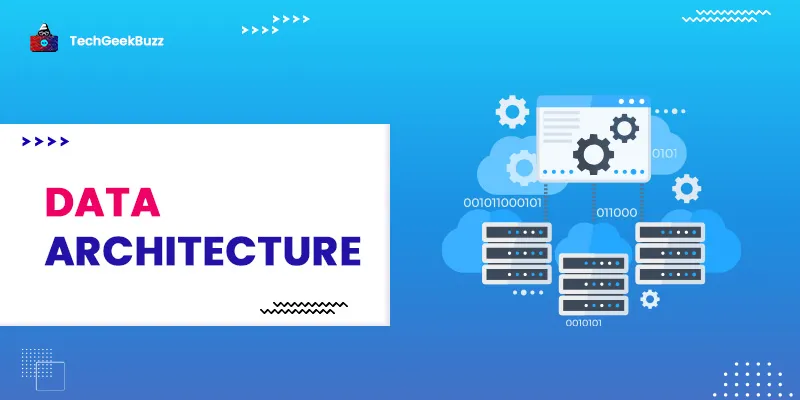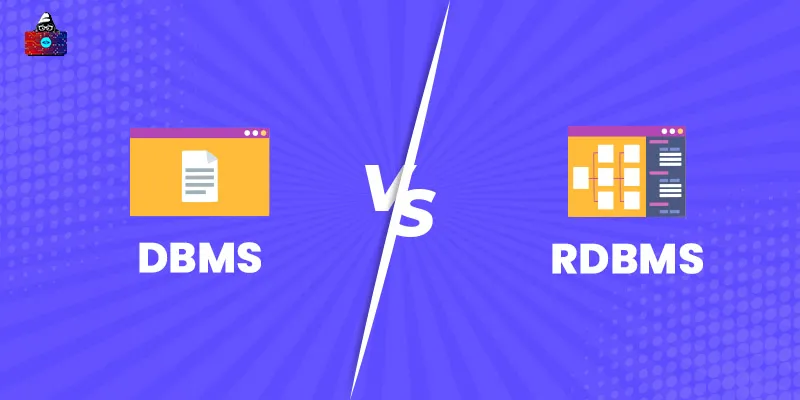In today’s data-driven world, companies and organizations significantly rely on data to make more informed business decisions. However, the data in its original form is raw and unstructured.
As a result, it becomes essential for businesses to sift through unstructured and sometimes erratic data and make it more relevant to solve various business problems. To make use of big data to its fullest, data architecture comes into play.
Data architecture serves as a foundation for an effective data strategy that converts any business requirements into data needs. It defines a standard way of collecting, storing, and utilizing data in information systems.
This blog post aims to help you understand what exactly data architecture is and its importance in organizations that leverage digital data to make informed decisions.
So without further ado, let us get started!
What is Data Architecture?
It is a set of models, policies, rules, and standards that an organization adheres to for managing and maintaining data and its flow throughout the organization. In other terms, we define it as a process of standardizing the way the organizations collect, store, transform, and manage data. Moreover, it acts as a blueprint that assists an organization in aligning data with its business goals and strategies.
The primary goal of data architecture is to make relevant data accessible to people as and when required. It aims to make whole data accessible throughout the organization so that it becomes easy to make actionable decisions.
Importance of Data Architecture
A decade ago, if a business strategist within an organization required data, they would have to connect with the IT team. Then the data engineer would write a SQL query to retrieve the data and deliver it to the business strategist. This entire process is pretty tedious and time-consuming.
However, sometimes data engineers have an unclear description of what data the business strategists or other people within an organization want. In such cases, the data needs of the initial requestor would not meet. The difficulties in accessing the desired data resulted in a limit in the business strategy.
The high availability of real-time data from internal and external sources has forced organizations to maintain and store data properly so that business strategists can quickly access and gain insights into it anytime.
If an organization stores and maintains data properly and in a well-structured manner, it becomes easier for experts to use only the relevant data that is essential for making business decisions.
Moreover, the aim of modern data architecture is to enable business strategists and data engineers to work together. They together take the business to the next level through informed decisions and manage how to collect data from different sources.
How have Data Architectures Evolved?
The adoption of big data platforms in companies began in the mid-2000s, and many architectures now include unstructured and semistructured data.
As a result, data lakes have been deployed, which often store raw data in its natural format rather than filtering and processing it for analysis upfront, which is a significant departure from the data warehousing approach.
ELT data integration, a variant of ETL that reverses the import and modify phases, is becoming more popular as a result of the new approach. Real-time data is now being included in more data structures as a result of the rising use of stream processing technologies.
In addition to the fundamental BI and reporting enabled by data warehouses, many systems now offer artificial intelligence and machine learning applications. The move to cloud-based solutions has increased the complexity of data architectures even further.
Most data architectures used to be less complex than they are now. They typically involved relational databases and structured data from transaction processing systems.
A storage server, sometimes with smaller data models constructed for different corporative units, and an operational data store as a staging area comprised analytics environments. Traditional retrieving, translating, and loading (ETL) techniques for data integration were used to handle transaction data for analysis in batch tasks.
Data fabric is another emerging architecture idea that attempts to simplify data integration and management operations. In data contexts, it has a wide range of potential applications.
Objectives of Data Architecture
- The purpose of any data architecture is to explain how data is obtained, transferred, stored, queried, and secured within the firm.
- To translate business requirements into data and system requirements, as well as to manage data and its movement within an organization.
- To upgrade a foundation's data architecture in order to effectively utilize AI and enable digital transformation.
Stages in the Development of a Data Strategy
- Define how data will assist the organization in achieving its objectives.
- Outline how the organization will perform the required data activities in order to meet its goals.
- Describe the adjustments that the company needs to make in order to maximize the value of its data activities, as well as the steps it will take to implement those changes.
- Establish a timeframe for completing the suggested actions, specify milestones and priorities, and present a forward-thinking strategy.
- Discuss the financial basis for the planned data activities and how they will benefit the organization, as well as how to use insights to boost profitability and monetize data.
Principles of Data Architecture
The principles of data architecture are simply rules related to the collection, management, usage, and integration of data. They form the foundation for the data architecture framework that helps businesses create effective data strategies and make better business decisions . The following are those significant principles:
-
Validate Data at the Point of Entry
Bad quality data adversely affects the decision-making process of any organization. Therefore, it becomes necessary to remove erratic and bad data to maintain the overall health of an organization's data. The data architecture should be able to flag and correct errors in data as soon as possible.
Though it is pretty challenging to identify errors in large and complex data sets, the data integration platforms make it easier. Such platforms automatically validate data at the point of entry, which, in turn, minimizes the time required to clean and prepare data for analysis.
-
Maintain Consistency
Another principle states that it is always better to maintain a common vocabulary for data architecture. Doing this will help reduce confusion among developers and non-developers working on the same project and allows easy collaboration between them.
Make sure to maintain a common vocabulary for shared assets, such as product catalogs, fiscal calendars, etc., irrespective of the business function or application.
-
Document Everything
The third principle states that you should embed the habit of documenting everything that takes place in the data process. This ensures that the data remains standardized and is visible across the organization. Moreover, documentation helps you keep track of the amount of data collected, determine the aligned and non-aligned datasets, and identify the applications requiring updation.
-
Avoid Data Duplication
When a developer works across multiple applications or systems, it is obvious that they copy data between them. However, it is tedious and time-consuming in the long run because if there is any change in a specific data set, they need to update it in all the other duplicated data sets.
The modern data architecture maintains data as a shared asset or as a single repository so that developers can access it for every application or system they work on. Moreover, if there is any change in data, they need to update it only in a single place, which significantly saves time.
Components of Data Architecture
The following are the various components of the modern data architecture:
-
Data Pipelines
Data pipelines control the flow of data from one point to another, from collecting and refining to analyzing and storing it. In other terms, data pipelines decide from where the data is collected, how it is moved, whether through batch-processing or stream processing, and where it is moved, whether to a data lake or any other application.
-
Cloud Storage
Cloud storage refers to the remote location where the data is stored. You can access such data only through an internet connection. There are three different types of cloud that are as follows:
- Public Cloud: This type of cloud storage is shared across various organizations.
- Private Cloud: This type of cloud storage is solely dedicated to a single organization.
- Hybrid Cloud: It is an environment that leverages public as well as private clouds.
-
APIs
API stands for Application Programming Interface. It facilitates communication between the host and the data requestor through an IP address. Moreover, it enables the host and the requestor to communicate with each other through different types of information.
-
AI and ML Models
Artificial Intelligence and Machine Learning models play a vital role in providing automated systems for data architecture. Both these technologies help businesses in making informed and calculated decisions. They can make accurate predictions using the collected data.
-
Data Streaming
Data streaming refers to the process of transferring data continuously from the source to the destination that needs to be processed and analyzed in the near future.
-
Kubernetes
Kubernetes is an open-source container orchestration platform that automates the development, scaling, and management of software applications. This platform has the ability to automate various major manual tasks involved in deploying, scaling, and managing containerized applications.
-
Cloud Computing
Cloud computing is an IT service that enables businesses to focus on developing products or services while third-party vendors manage their infrastructure. This service is available at an affordable price, and hence, businesses can save a lot of money. Also, there is no hassle in managing infrastructure, and data remains secure on the cloud.
-
Real-Time Analytics
Real-time analytics is the process that involves the analysis of real-time data to extract insights from it using different types of tools. Organizations leverage these insights to make actionable and valuable business decisions.
Data Architecture Frameworks
There are various frameworks available in the market that you can use to build your organization’s data architecture. The following are some of the most popular frameworks:
1. DAMA-DMBOK 2
DAMA International’s Data Management Body of Knowledge is a popular and widespread framework for data management. It entails the guideline principles for managing data. Moreover, it provides standard definitions of data management functions, terminology, deliverables, and roles.
2. Zachman Framework for Enterprise Architecture
In the 1980s, John Zachman at IBM created the Zachman Framework. This framework’s ‘data’ column consists of multiple layers, and these layers include the following:
- Architectural standards for business
- A semantic model or conceptual/enterprise data model
- An enterprise or logical data model
- Actual databases
3. The Open Group Architecture Framework (TOGAF)
TOGAF is a popular framework for enterprise architecture. It enables organizations to design, plan, implement, and manage enterprise information technology architecture. Also, it enables them to define business goals and align them with the objectives of enterprise architecture.
Data Architecture vs. Data Modeling
The intricacies of certain data assets are the focus of data modeling. It produces a visual representation of data items, their features, and the interconnections between them. This aids in the conceptualization of data requirements for applications and systems, as well as the design of database models for the data, which is accomplished through a series of concept-based, logic-based, and physical-based data models.
Data architecture creates a framework for data management and consumption by taking a more holistic perspective of an organization's data. However, as consultant Loshin pointed out in his comparison piece, data modeling and data architecture are complementary.
Loshin, who is also the head of the Center for Data Architecture, noted that data models are a critical component of data architectures and that a well-established data architecture makes data modeling easier.
Modern Data Architecture Best Practices
Advanced data architectures must combine emerging technologies like artificial intelligence (AI), automation, the internet of things (IoT), and blockchain. Modern data architectures, according to Dan Sutherland, senior director of technology consulting at Protiviti, should follow the following best practices:
- Cloud-native . Advanced data infrastructures should provide dynamic scaling, high availability, end-to-end security for data in motion and data at rest, as well as financial and quality scalability.
- Data pipelines that can scale . To take advantage of emerging technologies, data architectures should support real-time data streaming and micro-batch data bursts.
- Data integration that is seamless . Standard API interfaces should be used to combine data structures with legacy applications. They should also be designed to allow data to be shared between systems, locations, and organizations.
- Enablement of real-time data . Modern data architectures should be able to allow intelligent and active verification, categorization, governance, and management.
- Extensible and decoupled . Modern data architectures should be loosely linked, allowing services to perform basic functions without relying on other services.
Who is a Data Architect?
A data architect is a professional who is responsible for converting all the business needs into requirements based on data, i.e., technical requirements. They are responsible for creating a roadmap that includes technical details to satisfy the business requirements and objectives.
Moreover, they act as a bridge between business and technology. They create a blueprint for data management and data flow across an organization. In addition, data architects evaluate various data sources of an organization and create effective strategies to integrate, protect, and centralize them. This makes it easier for every employee of the organization to access data easily whenever required.
As a result, organizations and companies hire highly skilled data architects to manage their data architectures.
Conclusion
Data architecture defines a standardized process for organizations to collect, store, transform and manage data. It also defines the rules and standards for managing the flow of data across the organization.
Since the mastermind behind data architecture is a data architect, they are sought-after by various data-driven organizations and companies. Therefore, if you are looking to build your career as a data architect, it can be a wise decision.
Frequently Asked Questions
1. What is a good data architecture?
A good data architecture is something that combines data from different parts of an organization in a single repository and makes it accessible to everyone within the organization.
2. What is data modeling?
Data modeling is the process in software engineering that uses some specific techniques for creating data models for information systems.
3. How do data modeling and data architecture differ from each other?
Data modeling concentrates on the representation of data and is all about data accuracy. On the other side, data architecture focuses on the tools and platforms for storing and analyzing data and is all about the infrastructure that stores data.
People are also reading:




![Stored Procedures [Definition, Syntax, Implementation]](/media/new_post_images/Stored_Procedures.webp)